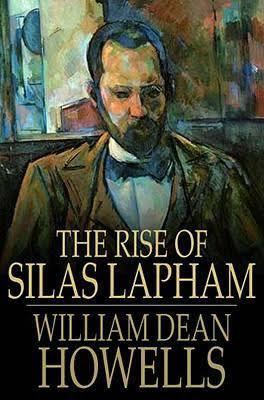6.8 /10 1 Votes6.8
Country United States Publisher Ticknor and Company Pages 341 Page count 341 | 3.4/5 Goodreads Language English Publication date 1885 Originally published 1885 | |||||||||||||||||||||||||||||||||
 | ||||||||||||||||||||||||||||||||||
Similar William Dean Howells books, Classical Studies books, Fiction books | ||||||||||||||||||||||||||||||||||
The Rise of Silas Lapham is a realist novel by William Dean Howells published in 1885. The story follows the materialistic rise of Silas Lapham from rags to riches, and his ensuing moral susceptibility. Silas earns a fortune in the paint business, but he lacks social standards, which he tries to attain through his daughter's marriage into the aristocratic Corey family. Silas' morality does not fail him. He loses his money but makes the right moral decision when his partner proposes the unethical selling of the mills to English settlers.
Contents
- The rise of silas lapham by william dean howells audiobook part 1 2
- List of characters
- Plot summary
- Composition and publication history
- Analysis
- References
Howells is known to be the father of American realism, and a denouncer of the sentimental novel. The resolution of the love triangle of Irene Lapham, Tom Corey, and Penelope Lapham highlights Howells' rejection of the conventions of sentimental romantic novels as unrealistic and deceitful.
The rise of silas lapham by william dean howells audiobook part 1 2
List of characters
Plot summary
The novel begins with Silas Lapham being interviewed for a newspaper profile, during which he explains his financial success in the mineral paint business. The Lapham family is somewhat self-conscious in their sudden rise on the social ladder and often fumble in their attempts at following etiquette norms. They decide to build a new home in the fashionable Back Bay neighborhood, and Lapham spares no expense ensuring it is at the height of fashion.
Tom Corey, a young man from a well-respected high-class family, shows an interest in the Lapham girls; Mr. and Mrs. Lapham assume he is attracted to Irene, the beautiful younger daughter. Corey joins the Lapham's paint business in an attempt to find his place in the world, rather than rely on the savings of his father, Bromfield Corey. When Tom Corey begins calling on the Laphams regularly, everyone assumes his interest in Irene has grown, and Irene takes a fancy to him. Corey, however, astounds both families by revealing his love for Penelope, the elder, more plain-looking, but more intelligent daughter who possesses an unusual sense of humor, a sophisticated literary passion, and a sensible but inquiring mind. Though Penelope has feelings for Tom Corey, she is held back by the romantic conventions of the era, not wanting to act on her love for fear of betraying her sister.
Silas Lapham's former business partner Milton K. Rogers reappears in his life, asking for money for a series of schemes. Mrs. Lapham urges her husband to support the man, whom he had pushed out of the paint company in what was deemed an inappropriate manner. Lapham's dealings with Rogers, however, result in a substantial financial loss. His major asset, the new home on Beacon Street, burns down before its completion. The Laphams are humbly forced to move to their ancestral home in the countryside, where the mineral paint was first developed.
Composition and publication history
Howells had moved to Massachusetts in the 1860s and became influential as the editor of the Atlantic Monthly, a role he held until 1881. The 1880s proved to be an extremely prolific period for him; in that decade, Howells published nine novels, a novella, several magazine articles, and a few plays. He completed The Rise of Silas Lapham while living at 302 Beacon Street in Boston.
Historian Francis Parkman had difficulty understanding the realism of the book and judged it by his more romantic standards and sought a didactic purpose for the story. As he wrote, "It is an admirable portraiture, realistic in the best sense of the word. It must touch the consciousness of a great many people; and as we descendants of the Puritans are said to be always on the lookout for a moral — it will teach the much needed lesson that money cannot do everything."
Analysis
Historian Scott E. Casper suggested that The Rise of Silas Lapham was partly a satire on contemporary biography conventions. Howells, who himself had written a campaign biography of Abraham Lincoln, attacked the formulaic style of biographies of the day, including the "rise" from early adversity to later success. Howells emphasized this early in the book, in a scene where Lapham is interviewed by Bartley Hubbard (a character revived from his 1882 novel A Modern Instance) who interjects while his subject tells his life story with assumptions of his romanticized life. Further, the title character is excessively class-conscious and worries about being humiliated for not fitting in with the culture of wealthy Boston, as exemplified in a scene where he struggles to determine if it is appropriate to wear gloves to a particular event, but refuses to ask for help.
